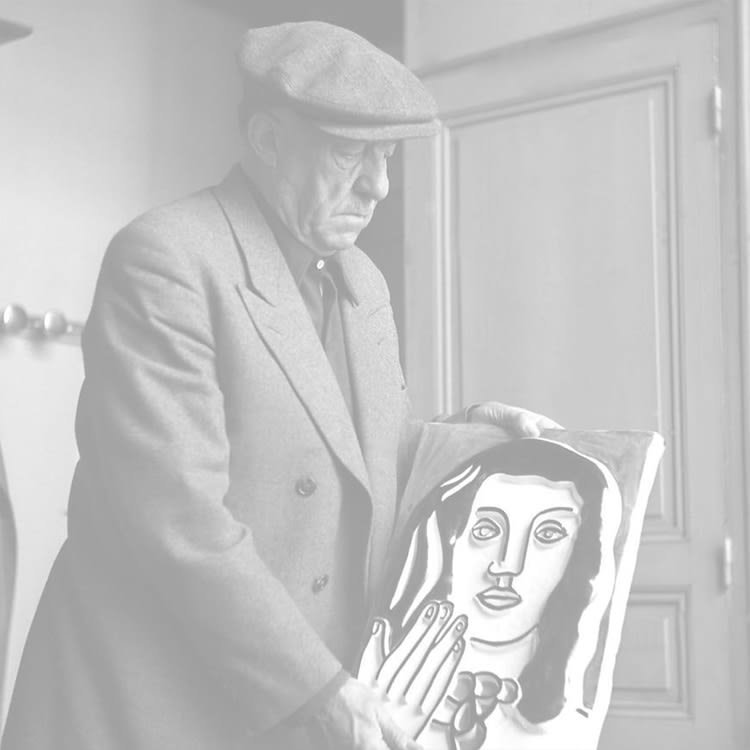FERNAND LÉGER 1881-1955
Fernand Léger is a Cubist and Modernist artist, whose works are exhibited at the HELENE BAILLY gallery.
Fernand Léger was born in Argentan, France, on February 4th 1881. He began his career as a an artist by serving an apprenticeship in architecture in Caen and working as an architectural draughtsman. In 1900, Léger went to Paris and was admitted to the École des Arts Décoratifs in 1903 and also attended the Académie Julian. The first profound influence on Léger's work came from Cézanne, that he discovered at a large-scale exhibition at the Salon d'Automne in 1907.
Léger became friends with Delaunay and maintained ties with great artists, including Matisse, Rousseau, Apollinaire and leading exponents of Cubism.
From 1909, Léger himself developed a quirky Cubist style, distinguished by reduction to the simplest basic forms and formal austerity linked with a pure, sharply contrasting palette by 1913-1914. As a painter, Fernand Léger exerted a huge influence on the development of Cubism, Constructivism and the modern advertising poster as well as various forms of applied art.
From 1911 to 1912 Léger belonged to the Section d'Or group. During World War I, he came into contact with modern technology, cannon in particular. The superhuman powers and precise beauty of ordnances enthralled him.
By 1920, Léger had achieved a mechanistic classicism, a precise, geometrically and harshly definitive monumental rendering of modern objects such as cog-wheels and screws, with the human figure incorporated as an equally machine-like being. Surrealism also left its mark on Fernand Léger in the 1930’s, loosening up his style and making it more curvilinear.
Léger taught at Yale University and at Mills College in California from 1940 until 1945. From now on, his dominant motifs were drawn from the workplace and their forms were post-Cubist, combined with the acute figurative precision of realism.
Fernand Léger died at Gif-sur-Yvette near Paris on August 17th 1955.
Source: www.fernand-leger.com




